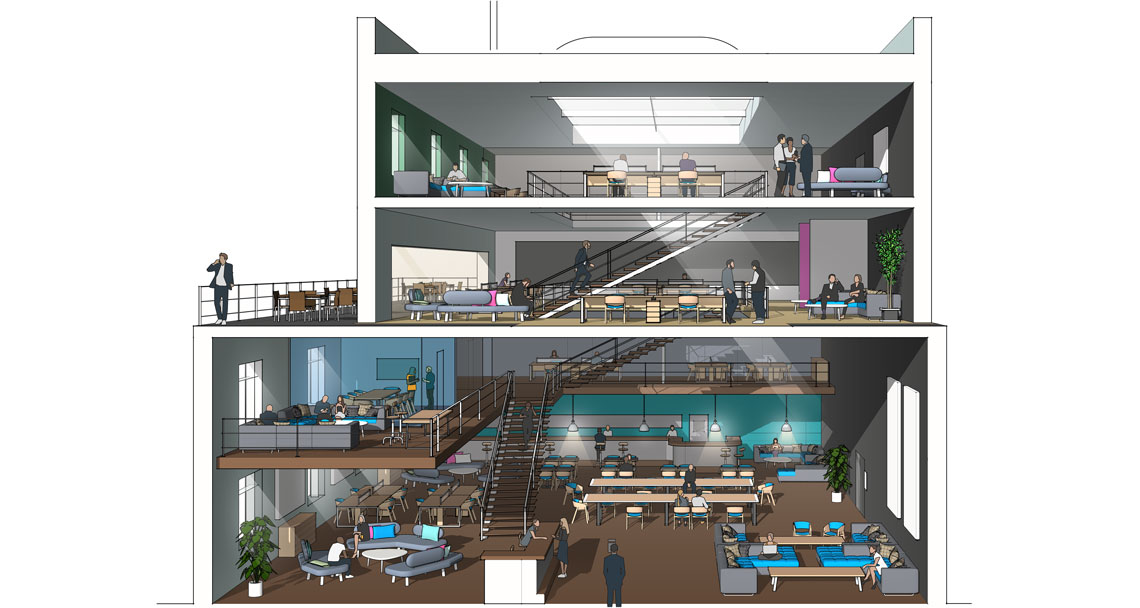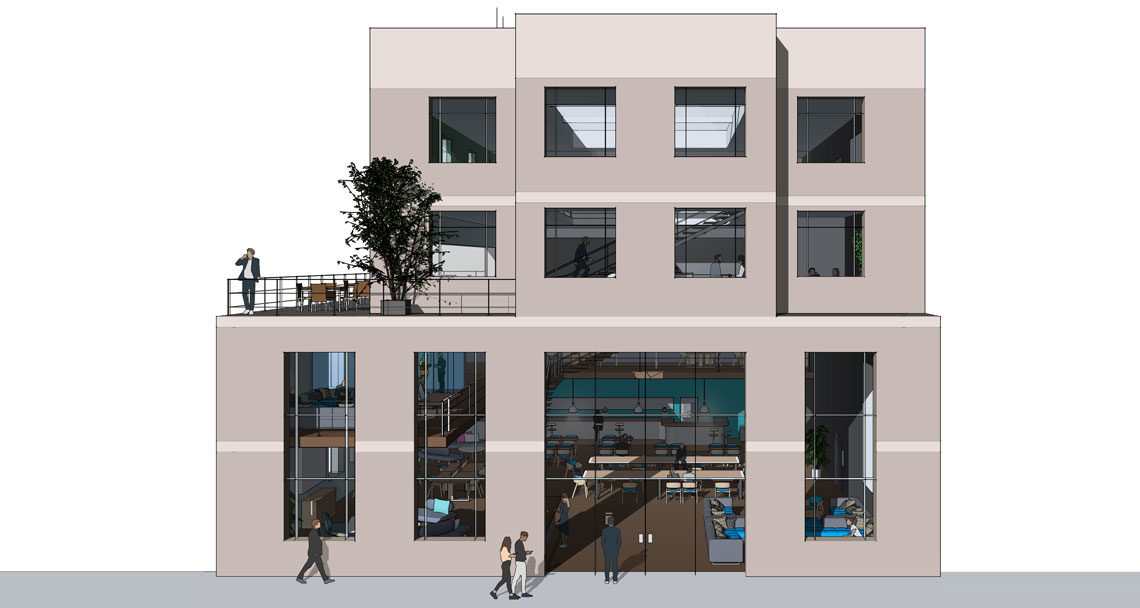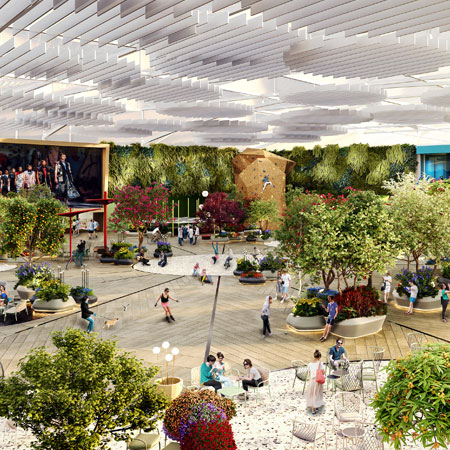Employees are turning away from the traditional 9 to 5 and embracing flexible ways of working. As a push for wellness and technology reshape how people can and want to work, businesses seek flexible solutions offering more than just square footage for rent. Here are 10 ways offices can change for the better…
1. Design to get people moving
Buildings need to change their shape so that active experience is preferred over inactive. A staircase, for example, could be positioned at the building’s perimeter to give rewarding views the higher you climb, with point-of-decision prompts such as signs at lifts to encourage use. Daylight is important, too – not only for lighting the space efficiently, but also to support the body’s natural circadian rhythms.
2. Promote total wellness
The social component of health can be an important factor in improving behaviour. This could take the form of a fitness app that encourages people to compete with one another, or a workplace community manager who introduces yoga classes instead of doughnuts. Such efforts may need an initial investment, such as access to a suitable space. According to research published in the US healthcare journal Health Affairs, medical costs fall $3.27 for every dollar spent on wellness programmes. Absenteeism costs fall by $2.73.
3. Play to the senses
Of the five senses, smell and taste may be the two that we consider least in an office environment. Smell is associated with memory – retailers and hospitality brands often use signature scents to create memorable multi-sensory experiences. Scent solutions such as soaps and candles in toilets are low-cost, yet show occupants that you’ve considered their full sensory experience. Taste can be as simple as providing good-quality coffee to demonstrate that you’re doing more than the bare minimum, or offering a varied and nutritious selection of snacks.
4. Put people in control
Technology that ensures comfort, enables customisation and gives a sense of ownership is in demand. For example, as part of their workplace experience solution, Comfy offers an app that “empowers employees to control all aspects of their workplace – including easily finding amenities, seeing and booking available workspaces, and adjusting temperature and lighting to their personal preferences,” says Erica Eaton, VP of Business Development and Strategy at Comfy. “Comfy aggregates data from employees’ interactions with the app and layers that with data from different building systems to drive the optimal use of the building,” she says.
5. Empower with technology
Amenities can improve comfort, productivity and satisfaction – but only if they are managed well. As offices and their occupants generate increasing amounts of data, there is a need for leadership at the intersection of people, place and technology. A building technology officer can use the data to make a case for change in the workplace. They may also have expertise in design or social science and combine these disciplines with the technology to enable the community to thrive.
6. Engage people with data
Occupants of smart buildings want to know how their data is being used. Tools such as fingerprint access or facial recognition need to balance security and privacy. Digital services that people already use, such as Google Maps and ride-hailing apps, have helped them to become more comfortable with sharing information – users recognise that doing so will enable a better experience.
7. Embrace flexibility
Private offices now comprise 25% of floorspace in co-working facilities, according to the latest survey from Deskmag. Cal Lee, founder and Head of Workthere, a Savills venture that helps businesses find flexible space, believes people often confuse the term ‘co-working’ with ‘flexible working’. Companies taking private offices are buying into the culture, he says.
“It’s about community aspects; they want to meet and collaborate with companies, attend the free events and enjoy simple perks, like free breakfast or cake.”
8. Stand out from the crowd
As co-working operators proliferate, Lee predicts a shift towards niche strategies. “These could be sector-specific, so tech, retail, fashion or arts-led, with the operator curating the mix of companies,” he says. Hong Kong-based The Executive Centre, which has been operating for 25 years, is one example. “It’s a mystery why all these co-working options are competing with a nearly identical product,” says CEO Paul Salnikow. “Our response to the expanding market has been to become even more premium, and we have redoubled our efforts to differentiate.”
9. Learn from great places
While businesses are buying into flexible space, Amanda Stanaway, Global Head of Workplace at the architecture firm Woods Bagot, says there is still much to learn: “What is consistent is the domestication and decorporatisation of the workplace,” she says. “There is also a drive for service.” The Dutch hotel brand citizenM optimised underused space in hotels for communal workplaces. Co-working spaces are offering increased service and experience, delivering workplace densities often double that of the traditional office.
10. Offer more than space
Co-working is, in part, about building and managing a successful ecosystem. Providers can bring together start-ups and established companies and mix tech with other industries. Amenities, ranging from free drinks to services such as marketing and legal counselling, can easily add $1-2 extra for every $1 of traditional space. Co-working is more expensive per sq ft. But co-working’s value is in density and savings in fit-out costs. Co-working operators use less space, so costs per person can be lower – sometimes significantly so. In Paris, for example, the sq ft costs are around three times higher than traditional space, but per-person costs are almost 30% lower. That’s why companies and individuals are choosing services and flexibility over square footage, and co-working has true value on its side as it battles against traditional office space.





